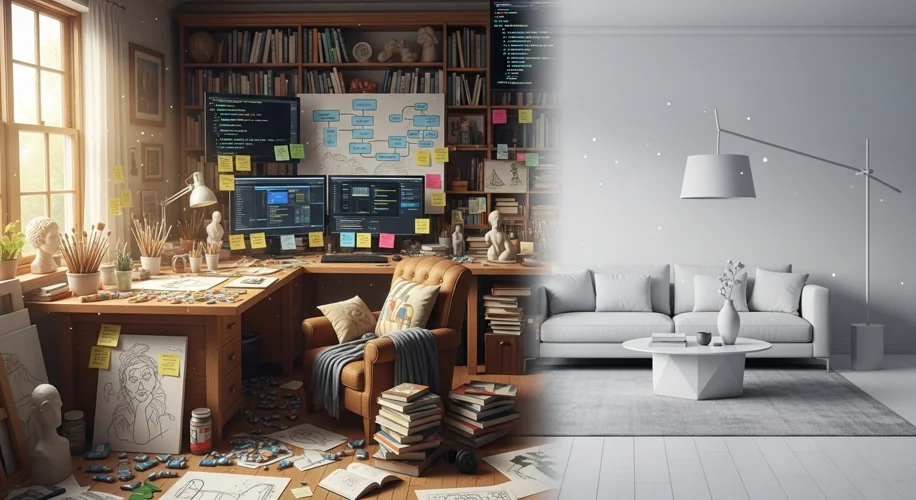Okay, so hear me out. We all love Pinterest, right? Scrolling through those perfect boards, dreaming up our ideal living spaces, maybe a killer gaming setup, or that aesthetically pleasing WFH desk. It’s like a digital mood board for life goals. For years, these curated visions felt aspirational, a fantasy we could work towards. But, let’s be real, sometimes those pictures felt too perfect.
Turns out, there was a reason for that. AI has been quietly stepping into the visual content game, and it’s starting to blur the lines between reality and what’s digitally crafted. You might have noticed more and more AI-generated images popping up, not just in weird meme territory, but in places we actually look for inspiration, like Pinterest.
What does this mean for us, the scroll-happy consumers? Well, those impossibly clean, perfectly styled rooms you save? Some of them might not even be real rooms. They could be entirely AI-generated. Tools like Midjourney, DALL-E, and Stable Diffusion can create photorealistic images from simple text prompts. Want a minimalist Scandinavian living room with a cozy reading nook and a specific shade of green accent wall? AI can whip that up in seconds, no interior designer or actual furniture required.
This is where things get interesting, and honestly, a little bit… weird. On one hand, it’s incredible. AI can help visualize ideas faster than ever. Need to brainstorm design concepts for a client or just want to see if that weird couch color works? AI makes it a breeze. It democratizes visual creation.
But here’s the catch: the fantasy aspect of platforms like Pinterest might be changing. If we can’t tell if the room we’re pinning is a real space or a digital fabrication, does it dilute the aspirational value? Does it set unrealistic expectations for what actual home decor can achieve? I mean, I’ve definitely saved images thinking, “One day, I’ll have that!” only to realize later it was an AI hallucination.
It’s not about AI being “bad.” It’s a tool, and like any tool, it can be used in tons of ways. The real shift here is in our perception. We’re moving into an era where visual information needs a critical eye. Is this a captured moment, or a generated one? The ability for AI to create believable, yet entirely fabricated, scenes means we’ll have to get savvier about how we consume online visuals.
For us tech enthusiasts, this is a fascinating development. It’s the cutting edge of generative AI impacting everyday experiences in ways we’re just starting to understand. It challenges our understanding of authenticity in digital spaces. So, next time you’re deep in a Pinterest rabbit hole, take a second look. That perfect corner might just be a figment of a very clever algorithm’s imagination. And honestly? That’s kind of wild to think about.
What do you guys think? Has AI-generated imagery changed how you use platforms like Pinterest? Let me know in the comments below!

